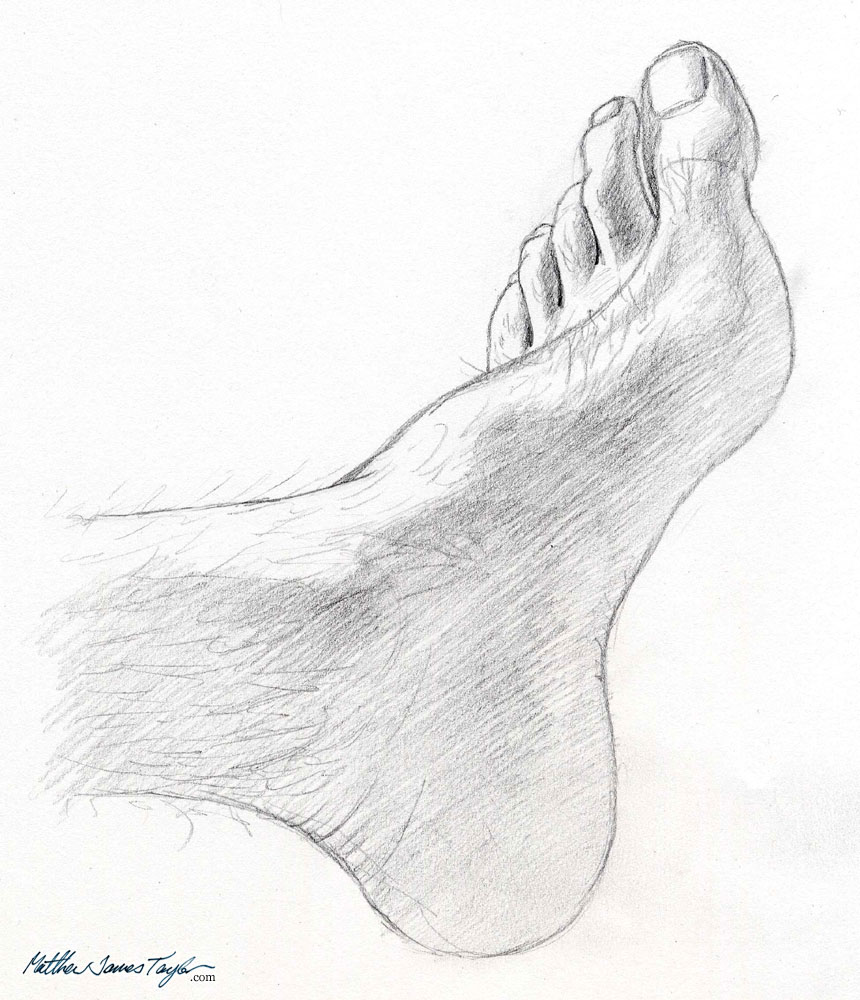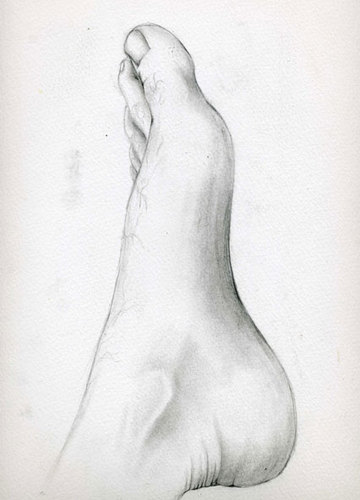-
Fundamentally all artworks consist of two components, and those two components are subject-matter and style.
Subject-matter is The What.
Style is The How.
Style is the way in which an artist presents her or his subject.
For example, the following is Matthew James Taylor’s depiction of the human foot:
And here is another sketch of a human foot but by a different artist:
Both drawings are done in charcoal, and in both drawings the subject-matter is the same: a human foot. Both sketches are instantly recognizable as a human foot, but notice that these two drawings are nevertheless distinctly different. What accounts for such a difference?
The artist’s style.
How the artist depicts his or her subject-matter makes for the most profound differences in the artwork.
It’s been said that what an artist chooses to present indicates that artist’s view of the universe. And how the artist presents it indicates that artist’s preferred mode of thinking.
Subject-matter = existence.
Style = consciousness.
Or to put the point in a slightly more philosophical style:
Choice of subject reveals the artist’s metaphysics. Style reveals the artist’s epistemology.
Style is the most complicated component of art, in part because there is so much room for variation. It’s also the most psychologically revealing.
In literature, a style can be prolix and confusing — e.g.:
I study and read. I bet I’ve read everything you read. Don’t think I haven’t. I consume libraries. I wear out spines and ROM-drives. I do things like get in a taxi and say, “The library, and step on it.” My instincts concerning syntax and mechanics are better than your own, I can tell, with all due respect. But it transcends the mechanics. I’m not a machine. I feel and believe. I have opinions. Some of them are interesting. I could, if you’d let me, talk and talk.
– David Foster Wallace, Infinite Jest
Or limpid and precise:
I recall one particular sunset. It lent an ember to my bicycle bell. Overhead, above the black music of telegraph wires, a number of long, dark-violet clouds lined with flamingo pink hung motionless in a fan-shaped arrangement. It was dying, however, and everything else was darkening too; but just above the horizon, in a lucid, turquoise space, beneath a black stratus, the eye found a vista that only a fool could mistake for the spare parts of this or any other sunset.
– Vladimir Nabokov
Or poetic:
I hate that dreadful hollow behind the little wood.
– Lord Alfred Tennyson
Or sophisticated and strange, as Walter Pater’s unforgettable description of the Mona Lisa:
She is older than the rocks among which she sits; like the vampire, she has been dead many times, and learned the secrets of the grave.
Or many, many other things as well, including many, many combinations of those things.
The basic fact of style is this: style is how the subject is presented. Like plot — and, for that matter, like thought — style is developed through practice and through imitation.
The clearer your thinking, the clearer your style.
Style




